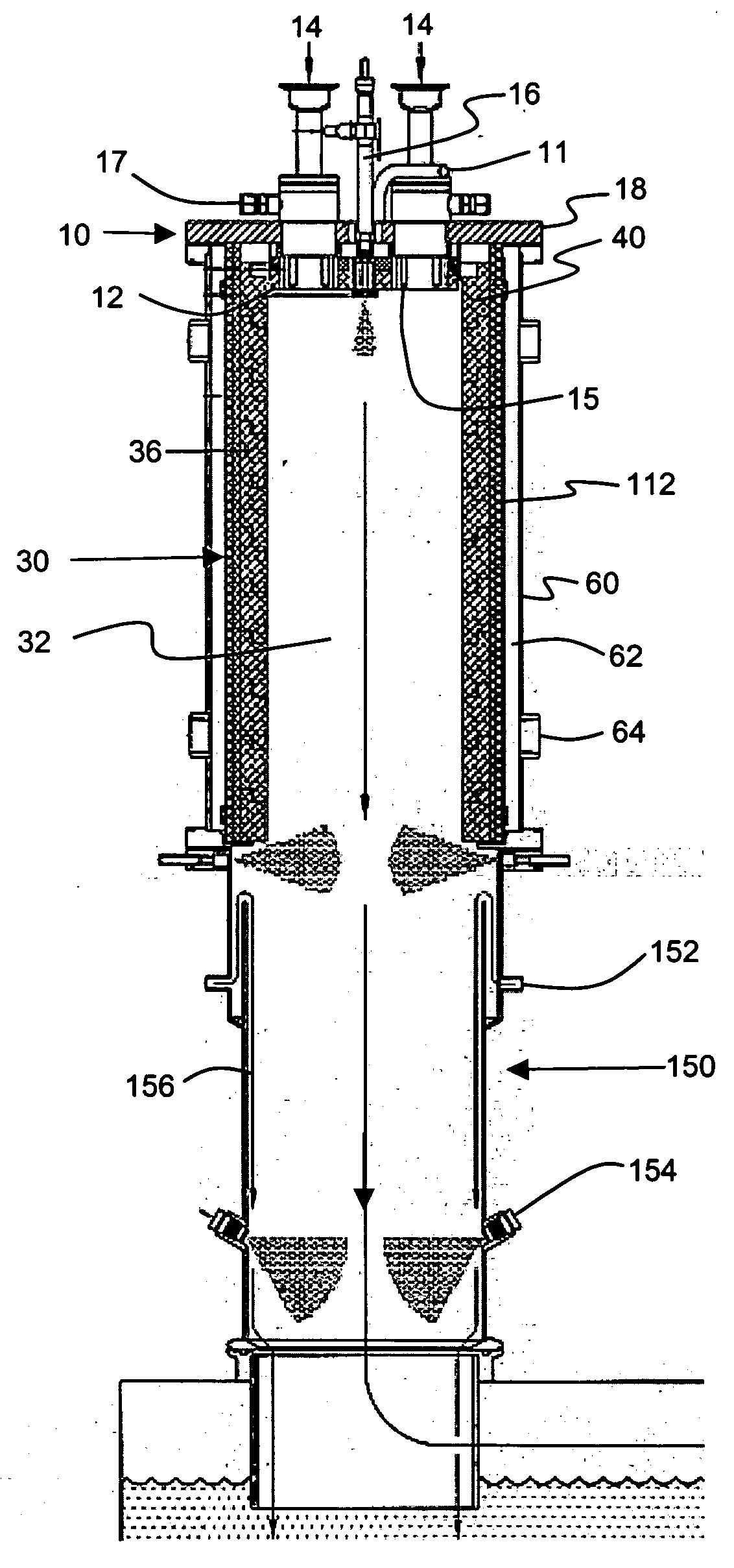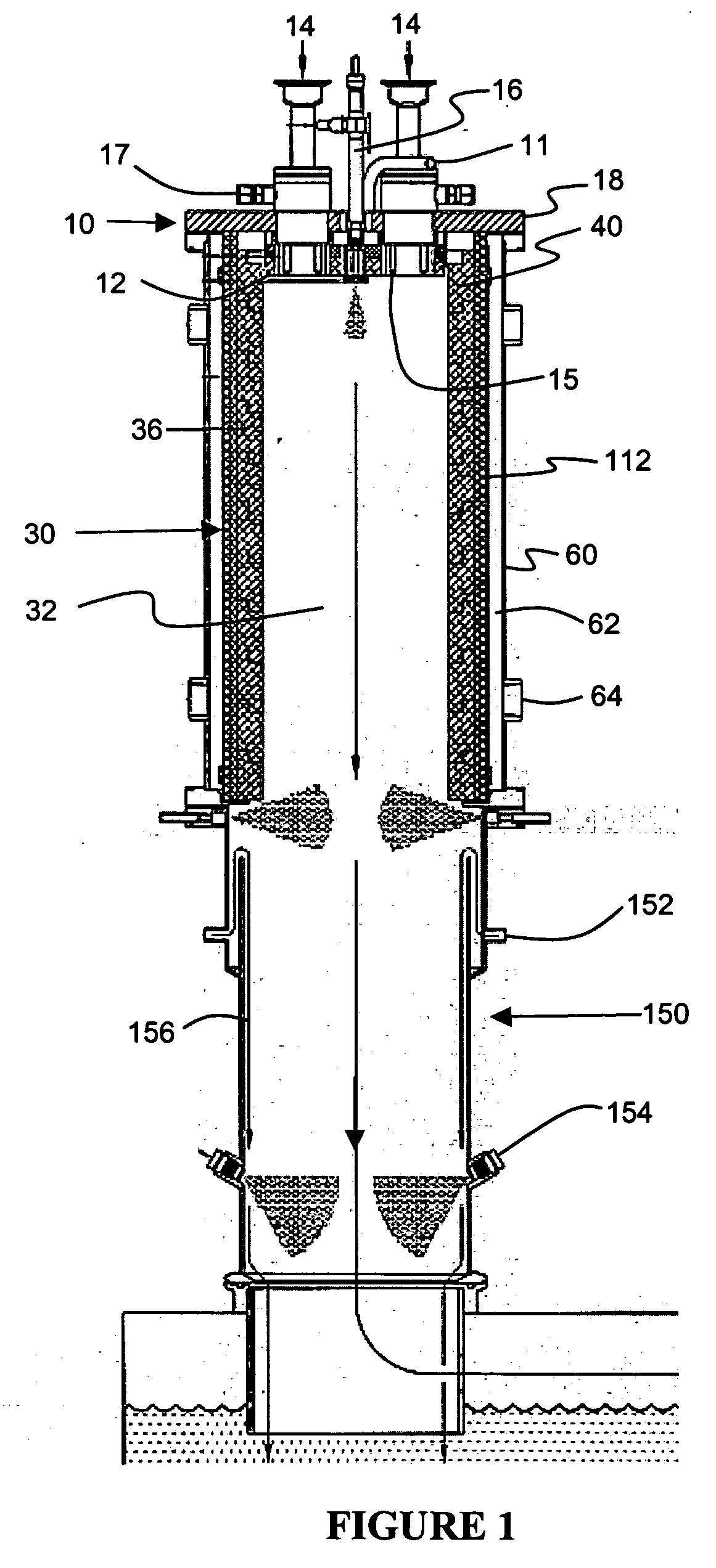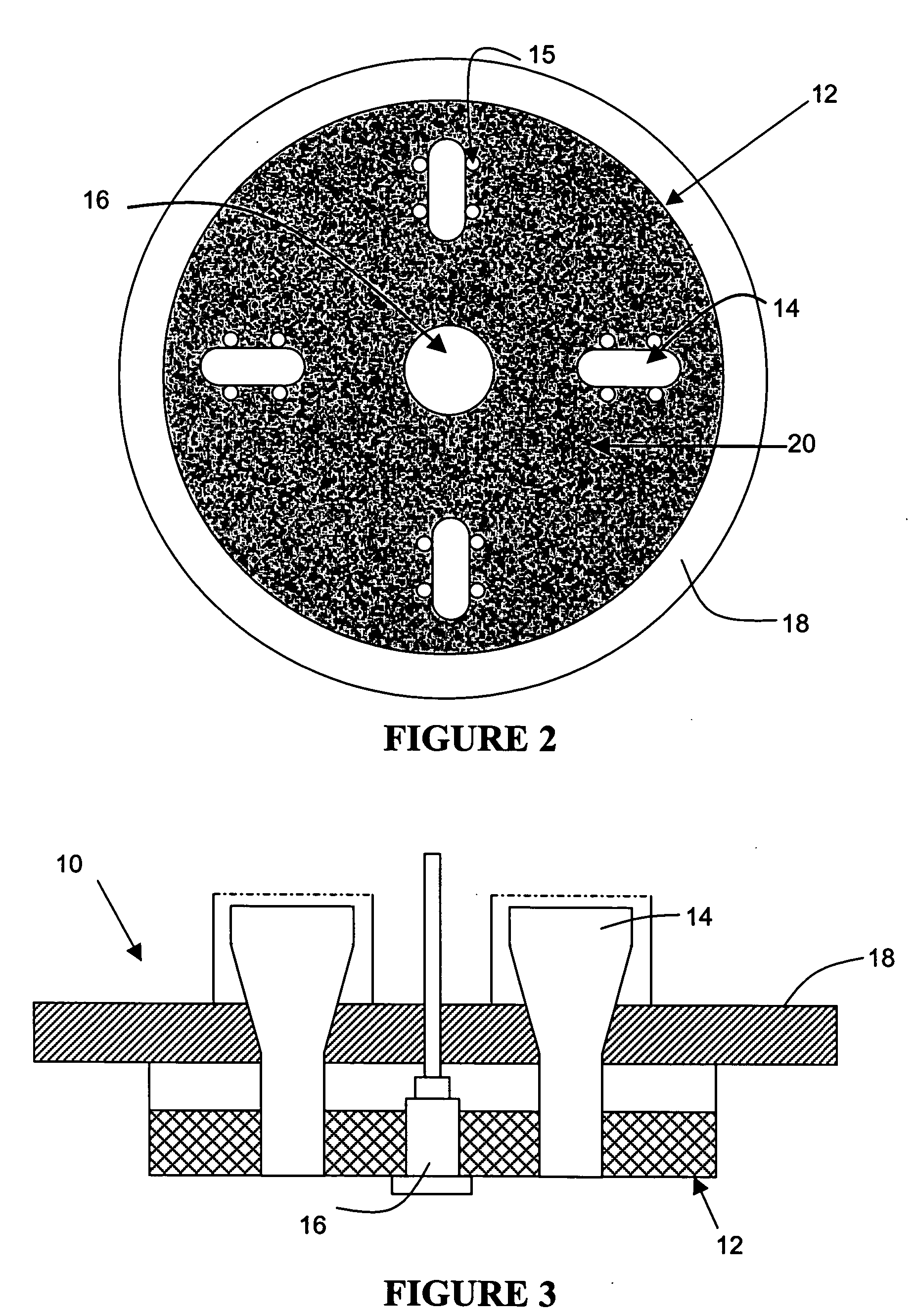Reactor design to reduce particle deposition during process abatement
a technology of process abatement and reactor design, applied in the field of improved, can solve the problems of halogens, e.g., fluorine (fsub>2/sub>), and other fluorinated compounds, and achieve the effect of reducing the accumulation of particulate products and reducing the cracking of the reactor chamber
- Summary
- Abstract
- Description
- Claims
- Application Information
AI Technical Summary
Benefits of technology
Problems solved by technology
Method used
Image
Examples
example
[0078] To demonstrate the abatement effectiveness of the improved thermal reactor described herein, a series of experiments were performed to quantify the efficiency of abatement using said thermal reactor. It can be seen that greater than 99% of the test gases were abated using the improved thermal reactor, as shown in Table 1.
TABLE 1Results of abatement experiments usingthe embodiments described herein.Test gasFlow rate / slmFuel / slmDRE, %C2F62.0050>99.9%C3F82.0045>99.9%NF32.0033>99.9%SF65.004099.6%CF40.258699.5%CF40.258399.5%
PUM
| Property | Measurement | Unit |
|---|---|---|
| Temperature | aaaaa | aaaaa |
| Temperature | aaaaa | aaaaa |
| Pressure | aaaaa | aaaaa |
Abstract
Description
Claims
Application Information
 Login to View More
Login to View More - R&D
- Intellectual Property
- Life Sciences
- Materials
- Tech Scout
- Unparalleled Data Quality
- Higher Quality Content
- 60% Fewer Hallucinations
Browse by: Latest US Patents, China's latest patents, Technical Efficacy Thesaurus, Application Domain, Technology Topic, Popular Technical Reports.
© 2025 PatSnap. All rights reserved.Legal|Privacy policy|Modern Slavery Act Transparency Statement|Sitemap|About US| Contact US: help@patsnap.com



